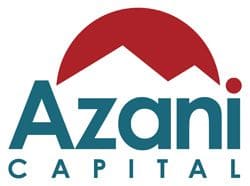It’s already time to think about wrapping up 2023 as we close out the last quarter of the year. Improvement may be better measured in terms of slower decline rather than speedy recovery. However, the yearly report isn’t all doom and gloom. In this article, we’ll take a look at where we stand as the holiday season approaches and the new year creeps up on us.
Rate Changes
In their November meeting, the Federal Open Market Committee decided to pause the rate hikes that have been so prevalent in 2023. This doesn’t, however, eliminate the possibility that they’ll change their mind in December. The Federal Reserve increased rates four times over the past year, in February, March, May, and July eventually bumping it up to 5.25% to 5.50%.
This still hasn’t managed to wrangle inflation down to the Fed’s target, but recent economic gains have stayed the Fed’s hand for now. GDP rose more than expected in the third quarter and the labor market has remained strong. As far as raising rates in 2024, the Fed has made it clear they’re not considering reductions and they’ll do what they have to as they assess conditions next year. That could mean more impacts to borrowing on the horizon.
Consumer Confidence
Gas and grocery prices continue to worry consumers, dropping consumer confidence in 2023. In October, the Conference Board published consumer confidence rates had dropped to 102.6. This is partially due to a hangover from the pandemic, but the war in Ukraine and the recent Israel-Hamas conflict also have consumers concerned. The majority of consumers – a little over 69% – believe a recession is likely over the next year.
The drop in consumer confidence is hitting big box stores like Target and Best Buy, which have both seen declines in sales. As to what the holiday season holds, experts’ projections are all over the map. Accenture, a global professional services company, reported the results of their 2023 Holiday Shopping Survey showing consumers cutting back on gift giving. Deloitte’s holiday survey, on the other hand, shows an expected increase in spending to pre-pandemic levels.
Commercial Real Estate
Consumer confidence hits the commercial real estate industry in different ways. As consumers increase spending, demand for commercial properties like hotels and retail establishments also increases. But when interest rates rise and consumer demand shrinks, property values can drop. This is especially true in areas that rely on tourism to power their economy.
In 2023, the slowing of interest rate hikes eased some of the strain on CRE, but a few sectors felt the burn more than others.
Office and Retail
The office sector is still struggling to gain ground due to low consumer demand, forcing owners to rethink their strategies. National vacancy rates are up just over 17%, and many office construction projects were canceled or put on hold in 2023. Delinquency rates for office sector mortgages jumped up, which will likely prompt banks and other traditional lenders to tighten their purse strings. Predicting further declines in demand for offices, some experts are pushing for zoning changes to convert offices into residential spaces.
When we look at retail’s performance, it’s clear that consumers have shifted toward spending on experiences rather than goods. A shortage of available retail space, an increase in operating costs, and a lack of labor meant retail leasing was restricted in 2023. However, this could mean hidden opportunities for CRE investors in the right retail markets.
Multifamily Real Estate
A flood of multifamily inventory in 2023 caused rent growth to slow down. However, investors moved away from starting new construction of multifamily properties, with rates dropping by more than half since last year. The past 12 months haven’t seen upward movement in occupancy rates or rent growth in the nation’s top multifamily markets. Now could be the time to focus on refinancing and forced appreciation projects instead of new construction.
Industrial Real Estate
Now for some good news. The industrial real estate sector was one of the most resilient in 2023, representing the best-performing asset class in CRE. E-commerce continues to drive most of the demand for industrial properties with no slowdown in sight. Loan delinquency rates are low in this sector, which means lenders are more favorable toward loans for warehouse, laboratory, and manufacturing purchases.
Working Capital
The increase in interest rates over the past two years has impacted cash flows for small businesses and major corporations alike. Managing liquidity and working capital has always been important, but mounting challenges from cost increases and global supply chain issues make it even more critical heading into 2024. Two ways to boost cash flow are corporate lines of credit and factoring.
The Fed has made borrowing more difficult in most cases, by causing interest rates to spike. Lines of credit are one working capital tool affected by the higher rates. Businesses can secure lines of credit with collateral assets or go for unsecured lines, depending their business credit scores. Because collateral lowers lender risk, secured lines of credit have the lower interest rates out of the two. APRs on credit lines can range from 10% to 80% based on credit score and the type of lender. Even at 80%, the cost can be minimal if you have a low balance, and you can still pay less for more borrowing power than you would with a business credit card.
Factoring is another working capital option that allows business owners to get working capital without taking out a loan. This method relies on accounts receivable, which a business can sell to boost cash flow faster. Most factoring companies charge a flat rate, which is a percentage of the account being sold. They range from 0.5% to 5% per month as long as the account is outstanding. While this is a lower-cost substitute for a line of credit, it doesn’t work for businesses that require payment on demand.
As always, the economy continues to fluctuate and confound expectations. Nailing down what the future holds isn’t an exact science. However, working with a professional who has their finger on the pulse of changing markets can give you a strong advantage when planning for your business in 2024. Loan brokers continuously adapt to changing markets to find the best financing terms for their clients. Even in a difficult economy, a broker can root out affordable loans and provide valuable advice on how to manage capital. If you want to thrive with CRE investments and increased working capital, find a broker you can trust before New Year’s.

